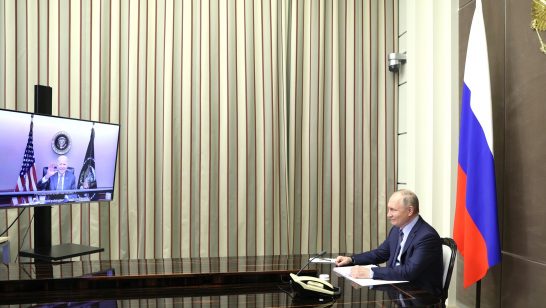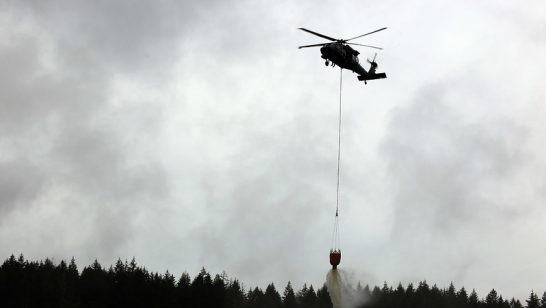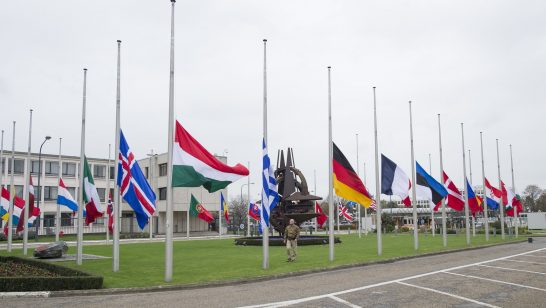
Since 2014, Russia and the West have been strengthening their mechanisms of mutual deterrence. The European Leadership Network’s recent report entitled “Towards a New Equilibrium: Minimising the Risks of NATO and Russia’s New Military Postures”, which was prepared by its Research Director Łukasz Kulesa with the involvement of a number of other specialists, is the latest in a series of publications devoted to tackling the issue of escalating tensions in relations between Russia and the West.
The new report follows the European Leadership Network’s tradition of producing well-founded analytical publications. It aims to evaluate the results of Russia and NATO expanding their military activity in Europe throughout 2014–2015, identify the prospects for the further development of current trends, and formulate a programme for increasing stability in the region.
Unlike many of his European colleagues, Łukasz Kulesa tries to formulate a balanced view of Moscow’s politics. He admits that there are deep-seated fears in Russia with regard to the military potential of the West and a frustration with the NATO-centric architecture of Euro-Atlantic security that was imposed by the United States and its allies in the 1990s. He observes that Russian criticism of the plan to launch a missile defence system in Romania and Poland in the context of reaching an agreement on the Iranian nuclear issue may be justified. Kulesa also draws attention that Russia’s increased military activity in 2014–2015 (which was so roundly criticized by the West) was based not only on the crisis in relations with NATO, but also on the need to assess the results of the reforms of the armed forces.
Kulesa nevertheless expresses concern about Russia’s increased military activity on the western borders of the country and in the Arctic region. He also notes the potential destabilizing effect of conducting unannounced military exercises, which involve the deployment of significant combat forces without informing western countries first. In addition, there are fears that Russia could be expanding its reliance on tactical nuclear forces, including their potential placement in the Kaliningrad Region and Crimea.
While recognizing that concerns regarding Russia’s security play a central role in Moscow stepping up its military activity, it is necessary to understand that NATO leaders are guided by a similar logic. The deployment of NATO’s military infrastructure in Central and Eastern Europe that Moscow finds troubling is seen in Brussels primarily as a tool of political deterrence, and a limited-scale one at that.
NATO justifies the deployment of additional forces and resources on its eastern borders, as well as the increased number of joint military exercises carried out there, by citing Russia’s military superiority in the region. Meanwhile, Moscow points to the general disparity in the volume of conventional arms the two sides possess, with the western bloc enjoying a significant advantage.
Furthermore, Russia is keeping a concerned eye on initiatives regarding U.S. military construction (the Russian leadership sees NATO primarily as a tool for consolidating and expanding the influence of the United States). Such initiatives include the deployment of a global missile defence system, the Prompt Global Strike programme and efforts to develop offensive cyber capabilities. While none of these initiatives presents a threat to Russian deterrence forces by themselves, together they may, in the long term, create challenges in terms of maintaining the global strategic balance.(1)
As a result of the different ways in which Russia and the West perceive the situation, they are becoming victims of the “security dilemma” – neither side seeks military confrontation, but both expect the other to take an unfriendly step towards one and thus take measures to prevent it. The only difference is that Moscow has been suspicious of NATO since the mid-1990s, whereas NATO only discovered the “Russian threat” in 2014. In current conditions, this difference has no practical value, as symmetry has been restored – perhaps not symmetry of fear, but certainly symmetry of mutual suspicion.
Technical Decisions and Political Challenges
Given the dynamics of mutual expectations, experts at the European Leadership Network believe that a return to the previous format of military relations between Russia and the West is impossible. The primary goal, in their opinion, is to prevent the regional arms race from continuing, having first ensured that mutual deterrence be kept at the minimum acceptable level. To achieve this, the European Leadership Network’s experts suggest focusing on five areas: increasing the transparency of military exercises; establishing a dialogue on military doctrines; limiting military presence near the borders; agreeing to not use tactical nuclear weapons as a means of maintaining the regional balance; and establishing new “rules of the game” for Russia–NATO relations.
The proposals for each of these areas seem to be both logical and useful. At the same time, concentrating on technical issues hides the more serious challenges to maintaining the regional balance and preventing tensions from escalating. The proposals are not so much connected with the further expansion of Russia and NATO’s military presence at each other’s borders (which appear to be reaching saturation point) as they are a reaction to political changes.
Tying more and more neutral states that are close to Russia’s borders to NATO could be such a change. Since 2014, Finland and Sweden have been ramping up their diplomatic and operational ties with NATO. At the same time, however, the issue of actually joining the organization has not been raised by the leaders of these countries. Any change in this position or, even worse, any attempts on the part of current NATO members to entice Finland and Sweden into the Alliance, will not be received well by Moscow. To be sure, such action would more than likely provoke a new wave of tensions. If this happens, it would be logical to expect Russia to step up its military deterrence measures, thus setting into motion a scenario whereby escalations will spiral out of control. And it is such a situation that frightens the authors of the report so much. Moscow’s heated reaction to the prospect of Montenegro joining NATO, an issue that had previously been of little concern to Russia, should be taken as an indication of how it will react should NATO expand northwards. If Finland and Sweden do join NATO, or if they continue to move closer towards the Alliance, then Moscow’s response is likely to be far more severe.
While the logic of the European Leadership Network’s report suggests that we should focus on building trust in the military sphere – because achieving political normalization has become something of a pipe dream – the dynamics of relations between Russia and the West since the 1990s show an inverse relationship. The intensification of mutual deterrence or restraint follows the ebb and flow of politics. In times of crisis, the first thing to go out the window is communication between the militaries of the parties involved. When things are looking better, military cooperation is used to show that progress is being made between the two sides.
In any case, the military build-up remains primarily a convenient element of political signalling. The situation has been brought about by the fact that Russian and Western leaders are convinced (with the possible exception of a number of Central and Eastern European countries) that a real armed conflict will never come to pass. Even against the backdrop of the Ukrainian crisis and disagreements over other issues on the international agenda, the possibility of a direct conflict among nuclear powers continues to be seen as impossible.
It is telling that, despite growing fears with regard to Russia in 2014–2015, the defence expenditures of NATO countries in relation to the size of their economies continued to decline, drifting ever further from the stated target of 2 per cent of Gross Domestic Product. In this respect, the situation in Europe is somewhat different from the classic “security dilemma”, which involves a much greater sense of vulnerability on all sides, as well as giving priority to achieving military parity in bilateral relations.
The proposals made in the report may indeed be practicable, given that political relations between Russia and the West have softened somewhat. Łukasz Kulesa believes that Moscow, having annexed Crimea and supported the protests in the Donbass Region of Ukraine, should take the first step towards rapprochement. Without going into a discussion of the author’s initial judgement (which is extremely contentious), I would note that, of late, Russia has made it clear that it is willing to compromise.
A glaring example of this was the speech given by Prime Minister Dmitry Medvedev at the Munich Security Conference. The very appearance of Russia’s second-in-charge in Munich, in one of the most important venues in European politics was designed to demonstrate Moscow’s good will; however, his speech called for the necessity to negotiate. Granted, a number of western observers took it as a threat, rather than a declaration of Russia’s commitment to de-escalation.
At the same time, some European members of NATO are growing tired of the confrontation. This much can be gleaned from statements made about the need to overcome the logic of the sanctions policy in the European Union. (2) If such steps gain traction, then the question of bringing political normalization into line with mechanisms for strengthening mutual trust and military restraint can be raised. This, of course, will require the involvement of the United States, which thus far has demonstrated no such desire to soften its positions on Europe.
————–
(1) Veselov, V. Non-Proliferation of Military Technology: Russia’s Contribution to Strenghthening the International Regime (Part 2) // International Processes, 2012. No. 2, p. 52
(2) Emmot R. EU sanctions on Russia at Risk without Ukraine Reforms: Denmark 05.02.2016. URL; Merkel Ready to Lift Russia Sanctions if Conditions Met: Party Officials. 16:02:2016. URL; Rettman A. Hungary: EU Sanctions on Russia Unlikely to be Renewed. 17.02.2016. URL.
This commentary has been translated from Russian and was initially published by the Russian International Affairs Council (RIAC).
The opinions articulated above represent the views of the author(s) and do not necessarily reflect the position of the European Leadership Network or any of its members. The ELN’s aim is to encourage debates that will help develop Europe’s capacity to address the pressing foreign, defence, and security policy challenges of our time.



